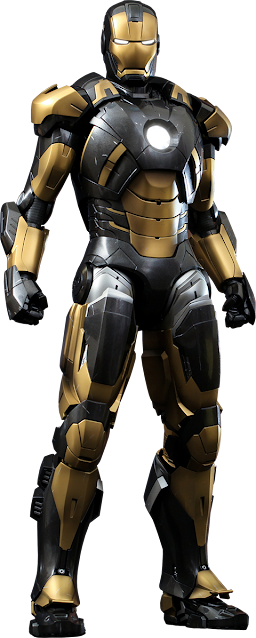Thanks to my delightful younglings and extended family, I
have recently been indoctrinated into the cult known as Fortnite. For
those who don’t know on the 16th of August 2024, the popular
video game Fortnite’s Battle Royale released its latest narrative
update, Chapter 5: Season 4 called ‘Absolute Doom’, which focuses
on Marvel’s premier villain and the Fantastic
Four’s most fearsome foe, the self-appointed Monarch of Latveria
himself, Victor Von Doom aka Doctor Doom.
In terms of plot, Doctor Doom has seized control of
the current formation of the Battle Royale Island, known as Helios,
remaking much of it to resemble his beloved home country of Latveria as
his ‘Kingdom of Doom’. This includes new landmarks such as Doomstadt,
Doom’s Courtyard and Castle Doom, all adorned in Latverian
Flags. Which finally brings me to my extremely belaboured point, the topic
for today: the History of the Latverian Flag.
The Kingdom of Latveria first appeared in Fantastic
Four Annual #2, which also presents the first time we see what could be
considered a national flag, emblem or regal symbols. We’ll see a few
reoccurring motifs in later stories, such as Doom’s stylised capitalised
‘D’ and the emblem with an eagle.
Following this is in Fantastic Four #85-#87 we
glimpse various more banners and designs with the most notable this time an
eagle on a sceptre, and the return of the ‘D’ logo, the latter of which
may simply be Victor’s personal mark.
Oddly, Incredible Hulk #143 is the first time we get
a clear look at what is unmistakeably a flag for Latveria outside their
embassy in New York when Doom brings the Hulk
there, and it’s also very different from what has come before. Depicted as a
red flag with a completely different black eagle-like design in the centre,
with a nighttime exception inverting this colour scheme (presumably a simple
case of artistic licence) and on the issue’s final page we see the bird as
simply a lighter red, notably alongside other flags.
In the 1987 Marvel Graphic Novel Emperor
Doom, we again see various stylised capital ‘D’ insignia adorning
various items after Doctor Doom uses the Daredevil
villain Purple Man’s mind control powers to become ruler of the entire
planet Earth.
In the graphic novel Doctor Strange and Doctor Doom:
Triumph and Torment the eagle and sceptre design returns, helping create
something of a throughline across the decades.
I’ve discussed the significance of both the Onslaught
and Heroes
Reborn events to the MC2 in the past, and here we have another
situation where it might apply as Doctor Doom was among those who apparently
perished saving the world from the psychic entity known as Onslaught.
It's revealed that Franklin Richards used his amazing
abilities to create a pocket dimension to save his parents and all the other
heroes. The reborn heroes would awaken in this pocket dimension to live out new
lives, unaware of their pasts. In this new world, Doctor Doom again
rules Latveria and we see an assortment of flags on display in Fantastic
Four (vol. 2) #4, including the ‘D’ and eagle designs.

We get the first iteration of what has become the most
iconic Latverian flag on the covers for Doom: The Emperor Returns #1
and #2. It may be argued this is not a national flag at all, but a flag symbolising
the sovereign himself, Doctor Doom. This one is a bit questionable as it
first appears on the Counter-Earth created by Franklin Richards at
a point after the MC2 branches off or diverges from the Main Marvel
Universe. Doctor Doom finds himself back on this Counter-Earth
and sets about conquering it, dubbing it ‘Planet Doom’.
We’ll see versions of the above design continue to crop up back
on the regular old Marvel Earth in Secret War #5, Penance:
Relentless #4, Books of Doom #6 and Captain America (vol. 5) #23 right
up until the date of this writing. A version of this flag is what appears in
the video game Fortnite and sparked the idea for this post, which speaks to its
popularity.
However, it’s worth mentioning we do get at least one more markedly
different Latverian flag in the Marvel Atlas #1 from 2007.
This depicts an armoured gauntlet grasping lighting bolts. This design does not
appear to have caught on however as I haven’t seen it reused anywhere.
There may be many more examples of possible Latverian
flag designs I am unaware of, but hopefully this has proven informative. With all
this context in mind, I wonder what the MC2’s Latverian flag
looks like? The war between Namor,
the Sub-Mariner and Doctor Doom left Atlantis destroyed and
Latveria’s former capital city Doomstadt in ruins, and in it’s
wake Doom was presumed dead for 12 years. We do not know much about its
political situation, but the nation’s flag may well have changed to reflect it’s
new status. Just something to think about.
A huge shout out to the classic Doctor Doom fan site,
Doom2099.com
for the much-needed obscure fictional vexillological information. I miss discovering
such places online and I would encourage you all to seek them out and support
them whenever possible while they remain! Major props to arias-98105 as always
for the constant support.
Until I rescue my beloved mother’s soul from the grasp of the
dreaded demon Mephisto, I remain
frogoat

_from_Hulk_and_the_Agents_of_S.M.A.S.H._Season_2_18_001.png)





















%20(Digital)%20(TheArchivist-Empire)%20005.jpg)
%20(Digital)%20(TheArchivist-Empire)%20006.jpg)
%20(Digital)%20(TheArchivist-Empire)%20015.jpg)
%20(Digital)%20(TheArchivist-Empire)%20020.jpg)
















%20019.jpg)


%20005-001.jpg)
%20005-007.jpg)
%20005-009.jpg)

-(Digital)-(Kileko-Empire)-202.jpg)
-(Digital)-(Kileko-Empire)-203.jpg)
-(Digital)-(Kileko-Empire)-218.jpg)
%20025-001.jpg)
%20025-015.jpg)
%20025-030.jpg)

